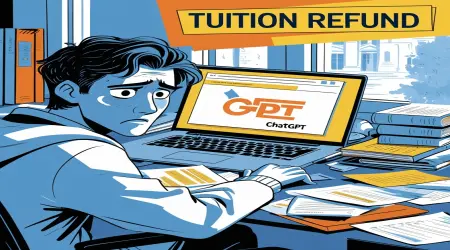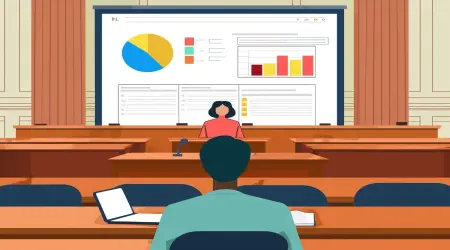Pokemon Revolution Online Rare Pokemon Hunting Guide for Beginners: Your Journey Starts Here!
Welcome, aspiring Pokemon Master, to the thrilling, sometimes frustrating, but ultimately rewarding world of
Pokemon Revolution Online (PRO)! You've embarked on an adventure across familiar regions, battling trainers, collecting badges, and building your dream team. But perhaps you've heard whispers, seen fleeting glimpses, or read envious chat messages about certain elusive creatures – the rare Pokemon. These aren't just your everyday Pidgeys or Rattatas; these are Pokemon that demand patience, strategy, and a bit of luck to encounter, let alone capture. They represent a pinnacle of achievement for many trainers, symbols of dedication and mastery within the vast PRO universe. If the challenge of tracking down these uncommon monsters excites you, then you've come to the right place. This comprehensive
pokemon revolution online rare pokemon hunting guide for beginners is designed specifically for you – the trainer who's ready to move beyond the main storyline and delve into one of PRO's most engaging endgame activities.
Many guides and forum posts discuss rare Pokemon, often assuming a level of experience or familiarity with complex game mechanics that can leave newcomers feeling overwhelmed. We understand that starting out on a low-authority site like Temploop means we need to provide clear, accessible, and actionable advice tailored for those who might not have encyclopedic knowledge of every spawn point or intricate game mechanic just yet. Our goal isn't just to list rare Pokemon, but to demystify the entire process. We aim to equip you with the knowledge and confidence needed to embark on your own rare hunting expeditions. We'll break down understanding pokemon rarity in PRO, provide essential tips for catching rare pokemon pokemon revolution online, and guide you through strategies that actually work, even if you're just starting your collection journey. Forget feeling lost in jargon or intimidated by veteran players; this guide is your personal roadmap to finding those coveted creatures.
The path to capturing rare Pokemon is often a marathon, not a sprint. It requires preparation, the right tools, a well-thought-out strategy, and perhaps most importantly, persistence. But the thrill of finally encountering that Pokemon you've spent hours searching for is an unparalleled experience in PRO. It's a testament to your skill and dedication as a trainer. Whether you seek a specific rare Pokemon to complete your Pokedex, need one for a competitive team, or simply love the challenge of the hunt, this guide will lay the foundation for your success. We'll cover everything from the absolute basics of rarity tiers to specific hunting techniques like the repel trick, and even point you towards some of the easier rares to target first. So, grab your Pokeballs, prepare your best catching team, and let's begin this exciting adventure together. Your journey into the world of rare Pokemon hunting in Pokemon Revolution Online starts now!
Understanding Pokemon Rarity in PRO: More Than Just Legends
Before embarking on your hunt, it is absolutely crucial to grasp understanding pokemon rarity in PRO. This concept is fundamental to the game's design and significantly impacts how you approach catching certain Pokemon. When veteran players talk about "rare" Pokemon in Pokemon Revolution Online, they aren't solely referring to Legendary figures like Mewtwo or Rayquaza, although those are certainly rare and often unobtainable through normal means. Instead, rarity in PRO is a specific game mechanic tied to spawn rates – how frequently a particular Pokemon species appears in a specific location. So, what counts as a rare pokemon in pokemon revolution online? Essentially, it's any Pokemon designated within the game's code as having a low probability of appearing during an encounter in the wild grass, caves, or water where it resides. This rarity is quantified through a tier system, which dictates the likelihood of encountering that Pokemon compared to others in the same area.
Think of it like this: in any given patch of grass, multiple Pokemon species might live there. Some, like Pidgey or Zubat, might appear very frequently – these are your common spawns. Others might show up less often, perhaps requiring dozens or even hundreds of encounters before one appears. These are the Pokemon classified within PRO's rarity tiers as uncommon, meagre, occasional, scarce, sparse, rare, or extremely rare. The higher the tier, the lower the chance of encountering that Pokemon in any single battle. This system adds depth and challenge to the game, encouraging exploration, persistence, and strategic hunting beyond simply completing the storyline. It transforms the act of catching Pokemon from a simple necessity into a dedicated pursuit, a core part of the PRO experience for many dedicated players.
Now, let's delve into the specifics with pokemon revolution online rarity tiers explained simply. PRO utilizes a system generally understood to have 10 tiers, although for wild, catchable Pokemon, Tiers 1 through 9 are the most relevant. Tier 10 is often reserved for unobtainable Pokemon, event Pokemon, or Legendaries that cannot be caught through standard wild encounters. While the exact percentage chances aren't officially published and can be subject to change by the developers, the community generally understands the tiers as follows, ranging from most common to most rare:
- Tier 1 (Abundant): These are extremely common Pokemon, often the ones you encounter constantly in an area (e.g., Pidgey on Route 1).
- Tier 2 (Common): Still very frequent, but slightly less so than Abundant.
- Tier 3 (Uncommon): You'll see these fairly regularly, but they aren't the dominant spawn.
- Tier 4 (Meagre): Encounter rates start to drop noticeably here. You might need several encounters to find one.
- Tier 5 (Occasional): These Pokemon appear sporadically. Finding one requires a bit more time spent in the area.
- Tier 6 (Scarce): As the name suggests, these are harder to come by. You'll likely need a dedicated hunting session.
- Tier 7 (Sparse): Encounters become significantly less frequent. Patience is key.
- Tier 8 (Rare): Now we're entering the territory of truly rare Pokemon. Finding these often requires hundreds of encounters and significant time investment. Many desirable Pokemon fall into this category or higher.
Tier 9 (Extremely Rare): These are the most elusive non-legendary Pokemon available through standard wild encounters. Encountering one is a major event, often taking many hours, thousands of encounters, and considerable luck or persistence.
Understanding these tiers is vital for setting expectations. If you're hunting a Tier 8 or 9 Pokemon, you need to be prepared for a potentially long grind. Conversely, targeting a Tier 5 or 6 Pokemon might be a more achievable short-term goal for a beginner. It's also important to note that rarity doesn't always equate to battle prowess. Some very rare Pokemon might be more valuable for collection purposes than for competitive battling, while some lower-tier Pokemon can be incredibly useful team members. The key takeaway is that the tier system directly reflects the encounter probability in the wild. A higher tier means a lower chance of seeing the Pokemon pop up on your screen during an encounter.
Why does this rarity system even matter? Why invest hours hunting a single Pokemon species? The motivations are diverse. For many, it's the thrill of the chase and the satisfaction of achieving a difficult goal – a core appeal of MMORPGs like PRO. Completing the Pokedex is a monumental task in PRO, and capturing rare Pokemon is an essential part of that journey. Certain rare Pokemon possess unique abilities, typings, or stats that make them highly valuable for Player vs. Environment (PvE) content like boss battles or even Player vs. Player (PvP) combat, although PvP often involves breeding for perfect IVs and natures, which is another layer beyond just catching. Furthermore, some rare Pokemon, especially those with good stats or natures, can hold significant value in the in-game economy, potentially being traded with other players for Pokedollars or other valuable Pokemon. For beginners, successfully hunting your first few rare Pokemon builds confidence and provides a deeper understanding of the game's mechanics, opening up a whole new dimension of gameplay beyond the linear story progression. It connects you more deeply to the game world and the player community, offering bragging rights and a tangible reward for your dedication.
Preparing for Your Rare Hunt: Essential Tips for Success
Now that you have a solid grasp of understanding pokemon rarity in PRO, it's time to gear up for the hunt itself. Success in finding those elusive creatures often hinges on meticulous preparation. Simply wandering into a known habitat and hoping for the best might work eventually, but a strategic approach significantly increases your efficiency and reduces potential frustration. This section provides essential tips for catching rare pokemon pokemon revolution online, covering everything from the right mindset and items to building an effective hunting team and utilizing available resources. Proper preparation is a cornerstone of how to increase chances of finding rare pokemon PRO, transforming a potentially tedious grind into a more focused and productive endeavor.
First and foremost, let's talk about mindset. Hunting rare Pokemon, especially those in Tier 7 and above, demands patience and persistence. There will be times when you spend hours encountering common Pokemon without a single sign of your target. It's easy to get discouraged. Remember that rarity is based on probability; long streaks without success are statistically normal. Approach each hunting session with realistic expectations. Set achievable goals, perhaps focusing on hunting for a specific duration rather than expecting to find the Pokemon immediately. Take breaks when you feel frustrated. Celebrate small victories, like finding a Pokemon with a desired nature, even if it's not your primary target. A positive and persistent attitude is arguably the most crucial tool in your arsenal.
With the right mindset established, let's move on to tangible preparations – the items you'll need. Running out of essential supplies mid-hunt can be incredibly disruptive. Ensure you are well-stocked before heading out:
- Pokeballs: This might seem obvious, but the type and quantity matter. While standard Pokeballs might suffice for lower-level or easier-to-catch Pokemon, you'll want a good supply of Great Balls and Ultra Balls for rarer, potentially higher-level targets. Consider specialized balls if applicable, like Dusk Balls for hunting in caves or at night, or Net Balls for Water/Bug types. Always carry more than you think you'll need; running out just as your target appears is a nightmare scenario.
- Repels (Super Repels): These are indispensable for efficient rare hunting, especially when using the repel trick (which we'll detail later). Super Repels are generally the most cost-effective option, preventing encounters with Pokemon lower than the level of your lead Pokemon for 200 steps. Stock up generously – you might use dozens or even hundreds in a single hunting session. Max Repels offer more steps (250) but are significantly more expensive.
- Healing Items: Potions, Super Potions, Hyper Potions, Full Heals, Revives – ensure your hunting team can withstand accidental KOs or status conditions inflicted by wild Pokemon or unexpected trainer battles if hunting in areas with NPCs. A well-stocked medicine bag prevents unnecessary trips back to the Pokemon Center.
- Escape Ropes / Dig TM: Essential for quickly exiting caves or dungeons once your hunting session is over or if you need to make a hasty retreat. Saves valuable time compared to backtracking manually.
Next, consider your hunting team composition. While your main story team might be powerful, it may not be optimized for catching. A dedicated hunting team can make the process much smoother:
- The Catcher: This is the cornerstone of your hunting team. The ideal catcher can reliably lower the target's HP without knocking it out and inflict a status condition (preferably Sleep or Paralysis) to increase catch rate. Classic choices include Parasect or Breloom, both capable of learning Spore (100% accurate sleep move) and False Swipe (an attack that always leaves the target with at least 1 HP). Other Pokemon with False Swipe and a paralyzing move like Thunder Wave can also work.
- Synchronize Pokemon: If you're hunting for a specific nature (which significantly impacts a Pokemon's stats), leading your party with a Pokemon that has the Synchronize ability and the desired nature gives you a 50% chance that the wild Pokemon you encounter will share that nature. Abra (easily catchable and evolves into Kadabra/Alakazam) is a common choice for obtaining various Synchronizers.
- HM Users: Many rare Pokemon habitats require specific Hidden Machines (HMs) like Surf, Cut, Strength, Waterfall, Flash, or Rock Smash to access. Ensure your team includes Pokemon capable of using the necessary HMs for your target location. A dedicated 'HM Mule' (like Bibarel in Sinnoh or Linoone in Hoenn) can often cover multiple HMs.
High-Level Lead (for Repel Trick): As mentioned, the repel trick requires leading with a Pokemon whose level is higher than the common spawns but lower than (or equal to) your rare target. This Pokemon should ideally be sturdy enough to handle potential encounters if your repel wears off unexpectedly.
Understanding the specifics of your target's habitat is also crucial. Does the Pokemon appear only during certain times of day (morning, day, night)? Is it more common in specific patches of grass or floors of a cave? While PRO doesn't always have complex time-based spawns like the core games, some locations might have different encounter tables depending on the time. Utilize reliable resources to gather this information. The PRO Wiki is often a good starting point, but always double-check information, especially regarding spawn rates and locations, as the game receives updates. Official PRO forums can have updated guides, but be wary of outdated information in older threads. Player-run Discord servers dedicated to PRO can also be valuable sources of real-time information and community knowledge, but always verify claims.
Finally, integrate these preparations into a routine. Before each hunt: check your item stock, configure your hunting team (placing the appropriate lead Pokemon first), review your target's location and any specific requirements (HMs, time of day), and mentally prepare for the potential time investment. This systematic approach minimizes errors, maximizes efficiency, and ultimately contributes significantly to how to increase chances of finding rare pokemon PRO. These tips for catching rare pokemon pokemon revolution online aren't just suggestions; they are foundational practices for any serious hunter.
The Beginner's Hunting Strategy: Finding Your First Rare Pokemon
With your preparations complete and mindset fortified, it's time to dive into the core of this pokemon revolution online rare pokemon hunting guide for beginners: the actual hunting strategy. This section outlines a systematic approach designed to maximize your efficiency and increase your odds of encountering those elusive rare Pokemon. We'll cover choosing your target, finding reliable information, executing the hunting loop, and mastering a crucial technique – the repel trick. Remember, consistency and adherence to a strategy are key elements in how to increase chances of finding rare pokemon PRO.
Your first step is choosing a target. As a beginner, it's wise to start with more accessible rare Pokemon rather than immediately aiming for the Tier 9 unicorns. Consult resources like the PRO Wiki or reliable community guides (cross-referencing information is always recommended) to identify Pokemon classified in the lower-to-mid rarity tiers (perhaps Tier 5, 6, or 7) that reside in areas you can easily access. Consider Pokemon found in early-game regions like Kanto or Johto, as these often have lower level ranges and fewer environmental obstacles. Selecting an achievable first target builds confidence and helps you refine your hunting technique before tackling more challenging quarries.
Once you have a target, pinpoint its exact location(s). Vague information like "Route 12" isn't enough. Does it appear in the grass or while surfing? Is it more common in a specific patch? Reliable resources should provide this level of detail. Note any prerequisites for accessing the area, such as specific HMs (Cut, Surf, etc.) or story progression milestones. Double-check the level range of your target Pokemon and the other Pokemon that spawn in the same location – this information is critical for employing the repel trick effectively.
Now, let's execute the hunting loop. This is the repetitive process you'll follow during your hunt:
- Travel: Reach the designated hunting spot.
- Prepare: Apply Repel (if using the trick), ensure your lead Pokemon is correct, heal if necessary.
- Encounter: Move through the grass, cave floor, or water to trigger wild encounters. Maximize movement efficiency – running back and forth in a small patch of grass is often faster than covering large areas.
- Identify: When an encounter occurs, quickly identify the Pokemon. Is it your target? If yes, proceed to catch it. If no, run from the battle immediately to save time.
- Catch (if target): Switch to your designated catcher (e.g., Parasect/Breloom). Use Spore or another status move. Carefully whittle down its HP using False Swipe. Start throwing appropriate Pokeballs.
- Repeat: If you didn't encounter your target or failed the catch (it happens!), re-apply Repel as needed and continue moving to trigger the next encounter. Repeat this loop until you find and catch your target or decide to end the session.
This loop seems simple, but efficiency is paramount. Minimize time spent in menus or confirming actions. Running from non-target encounters instantly is crucial. Every second saved increases the number of encounters you can have within a given timeframe, directly impacting your chances.
Now, let's focus on a vital technique: the pokemon revolution online repel trick for rare pokemon. This is arguably the single most effective strategy for targeting specific rare Pokemon that have a higher level than most other spawns in the area. Here’s how it works:
- The Principle: Repels prevent encounters with Pokemon whose level is lower than your lead Pokemon's level.
- The Strategy: You place a Pokemon at the front of your party whose level is higher than the most common, lower-level Pokemon in the area, but equal to or lower than the level of the rare Pokemon you are targeting. Then, you use a Repel.
- The Result: The Repel will prevent encounters with all the common, lower-level Pokemon. The only Pokemon you can encounter are those at or above your lead Pokemon's level. If your target rare Pokemon is the only one (or one of very few) that meets this level requirement in that specific location, the repel trick drastically increases the percentage of your encounters that are your target Pokemon.
Implementing the Repel Trick Step-by-Step:
- Research: Identify the exact level range of your target rare Pokemon and the level range of all other Pokemon in the hunting spot.
- Select Lead Pokemon: Choose a Pokemon for the front of your party whose level is exactly the minimum level (or sometimes a specific common level) of your target rare Pokemon. For example, if your target Lapras appears at level 35-40, and common Tentacruels appear at level 30-35, leading with a level 35 Pokemon is ideal.
- Go to Location: Travel to the precise hunting spot.
- Apply Repel: Use a Super Repel (or Max Repel).
- Hunt: Move around to trigger encounters. Theoretically, only Pokemon at level 35 or higher should appear. If your target is the only level 35+ Pokemon there, every encounter should be your target.
- Re-apply: Keep track of your Repel steps (Super = 200, Max = 250) and re-apply before it wears off to avoid unwanted lower-level encounters.
Effectiveness and Limitations: The repel trick is incredibly effective when the target rare Pokemon has a distinct, higher level range than common spawns. However, it doesn't work if your target shares its level range with many other common Pokemon, or if your target is actually lower level than some common spawns. Always verify the level data for your specific hunting ground. Sometimes, multiple Pokemon might meet the level criteria, meaning the trick filters out some unwanted encounters but not all. Despite its limitations, mastering the repel trick is fundamental for efficient rare hunting in PRO and a core part of any effective pokemon revolution online rare pokemon hunting guide for beginners.
By combining careful target selection, location knowledge, efficient execution of the hunting loop, and strategic use of the repel trick, you significantly improve your odds. Remember that persistence pays off. Don't be discouraged by initial dry spells; stick to the strategy, and eventually, that rare encounter will happen.
Easiest Rare Pokemon to Find in Pokemon Revolution Online: Your Starting Targets
Embarking on your rare hunting journey can feel daunting, especially when faced with tales of Tier 9 Pokemon requiring days of searching. However, not all rares demand such extreme dedication. As a beginner, focusing on the easiest rare pokemon to find pokemon revolution online is an excellent strategy to build confidence, practice your hunting techniques (like the repel trick), and start populating your collection with Pokemon that are less common than a Pidgey but more accessible than a pseudo-legendary. Defining "easiest" in this context involves a few factors: they typically belong to lower rarity tiers (think Tier 5, 6, or maybe 7), are found in locations accessible relatively early in the game (like Kanto or Johto), and might have level ranges suitable for the repel trick without excessive competition from other spawns.
This section spotlights a few examples of Pokemon often considered among the more manageable rares for newcomers to target. Please note that spawn locations and specific rarities in Pokemon Revolution Online can change with game updates. Always cross-reference this information with the most current PRO Wiki data or reliable community resources before starting your hunt. The Pokemon listed here are chosen based on general historical accessibility and suitability for beginners.
1. Scyther (Kanto Safari Zone)
- Typical Rarity Tier: Often found in Tier 6 or 7, depending on the specific zone.
- Why it's Considered "Easier": While Safari Zone mechanics (using Safari Balls and Bait/Rocks instead of battling) are different, Scyther often appears in accessible areas within the Kanto Safari Zone. Its rarity, while not common, is generally lower than many other sought-after rares. The Safari Zone itself is accessible after reaching Fuchsia City in Kanto.
- Common Location: Kanto Safari Zone (various areas, check Wiki for specifics).
- Basic Hunting Strategy: This hunt bypasses the standard battle/catch mechanic. You'll need to enter the Safari Zone (pay the fee, get Safari Balls). The strategy involves encountering Scyther and then choosing between throwing Bait (makes it less likely to run, harder to catch), Rocks (makes it more likely to run, easier to catch), or a Safari Ball. It's a game of chance. Maximize encounters by quickly navigating known Scyther spawn areas within the Safari Zone. Repels can still be useful here to filter out lower-level Pokemon if Scyther has a higher level range in a specific area, allowing you to focus your Safari Balls.
- Potential Uses: Scyther boasts high Speed and Attack, evolving into the formidable Scizor (Steel/Bug type) via trade holding a Metal Coat. Scizor is often a powerful asset in both PvE and PvP.
2. Pinsir (Kanto Safari Zone)
- Typical Rarity Tier: Similar to Scyther, often Tier 6 or 7.
- Why it's Considered "Easier": Like Scyther, Pinsir is frequently found in the Kanto Safari Zone, making it accessible relatively early. It serves as a counterpart to Scyther, offering another manageable rare target within the same unique hunting ground.
- Common Location: Kanto Safari Zone (often in different areas than Scyther, check Wiki).
- Basic Hunting Strategy: Identical to Scyther hunting due to the Safari Zone mechanics. Focus on encounter maximization and strategic use of Bait/Rocks/Safari Balls.
- Potential Uses: Pinsir is a powerful pure Bug-type Pokemon with high Attack. While it doesn't evolve, it can be a strong physical attacker for PvE content.
3. Dratini (Kanto Safari Zone / Dragon's Den - Johto)
- Typical Rarity Tier: Can vary, often Tier 7 or 8, sometimes higher depending on location and game version.
- Why it's Considered "Easier" (Relatively): While potentially a higher tier than Scyther/Pinsir, Dratini is the first stage of the popular Dragonite line and is sometimes accessible via fishing in specific locations like the Kanto Safari Zone or Johto's Dragon's Den. Fishing mechanics can sometimes isolate encounters better than walking in grass. Its inclusion here highlights a different hunting method (fishing) for a desirable rare.
- Common Location: Kanto Safari Zone (Fishing with Super Rod), Dragon's Den (Johto - Fishing/Surfing).
- Basic Hunting Strategy: Requires the Super Rod. Find the designated fishing spots. Repeatedly use the Super Rod. Unlike Safari Zone Pokemon, fished Pokemon are battled normally. Have your catcher ready (Parasect/Breloom) to Spore/False Swipe. Fishing encounters can be slow, so patience is key. If hunting in Dragon's Den, be prepared for other water encounters.
- Potential Uses: Dratini evolves into Dragonair and ultimately Dragonite, a pseudo-legendary Dragon/Flying type with immense stats and versatility, highly valued in all forms of content.
4. Chansey (Kanto Safari Zone / Certain Routes)
- Typical Rarity Tier: Often Tier 7 or 8, notoriously elusive.
- Why it's Considered "Easier" (Contentious): Chansey makes this list not because it's easy in terms of encounter rate (it's often very rare), but because it sometimes appears in accessible locations like the Safari Zone or specific Kanto routes relatively early. Hunting Chansey is a classic PRO grind, often undertaken for its high HP and ability to evolve into Blissey, a premier special wall. It represents a step up in difficulty but is a common target for dedicated players.
- Common Location: Kanto Safari Zone (specific areas), potentially some Kanto Routes (check Wiki).
- Basic Hunting Strategy: If in Safari Zone, use Safari mechanics. If on routes, standard hunting applies. The repel trick might be viable depending on Chansey's level relative to other spawns. Be prepared for a potentially long hunt due to its higher rarity tier. Chansey can also be frustrating to catch due to its high HP and potential use of healing moves.
- Potential Uses: Chansey (and its evolution Blissey) are exceptional special walls in both PvE and PvP due to their colossal HP stat. Chansey also sometimes holds the Lucky Egg item, which boosts EXP gain (though item farming is another topic).
Remember, these are just starting points. As you explore more regions like Johto, Hoenn, and Sinnoh, you'll discover many other Pokemon that fit the description of easiest rare pokemon to find pokemon revolution online relative to the truly top-tier rarities. The key is to start small, learn the mechanics, utilize resources effectively, and gradually tackle more challenging hunts as your skills and patience grow. Successfully catching even one of these Pokemon is a significant achievement for a beginner and a great stepping stone into the deeper aspects of Pokemon Revolution Online.
Exploring PRO Rare Pokemon Locations: Kanto Focus
Having identified some potentially easier targets, let's narrow our focus to a specific region teeming with opportunities for beginner rare hunters: Kanto. As the starting region for many players in Pokemon Revolution Online, Kanto offers a familiar landscape packed with diverse environments, many of which serve as habitats for sought-after Pokemon. This section delves into specific PRO rare pokemon locations Kanto, highlighting key areas known for their rare spawns and potential as PRO rare pokemon farming spots. Understanding these locations, their access requirements, and the Pokemon potentially found within is crucial for planning effective hunting expeditions in this foundational region.
Why focus on Kanto initially? Beyond being the starting point, Kanto features a wide array of environments – forests, caves, water routes, unique facilities like the Safari Zone and Power Plant – each with distinct encounter tables. Many classic and desirable Pokemon, including some mentioned in the previous section (Scyther, Pinsir, Dratini, Chansey), call Kanto home. Furthermore, navigating Kanto is often less complex than later regions, making it an ideal training ground for mastering hunting techniques before venturing into Johto, Hoenn, or Sinnoh.
Let's spotlight some key Kanto locations renowned for rare Pokemon encounters:
1. Kanto Safari Zone (Fuchsia City)
- Access: Requires reaching Fuchsia City and paying the entry fee.
- Notable Rares (Historically): Scyther, Pinsir, Chansey, Kangaskhan, Tauros, Dratini (Fishing).
- Mechanics: Unique catch mechanics (Safari Balls, Bait, Rocks). No traditional battling. Requires Super Rod for fishing rares like Dratini.
- Hunting Tips: The Safari Zone is vast with multiple areas. Consult the PRO Wiki for up-to-date maps showing specific spawn locations within the zone for each target Pokemon. Efficiency is key due to the step limit (though often generous in PRO). Repels can still be used to filter levels if applicable. This is a prime location for targeting several beginner-friendly rares simultaneously, making it one of the most popular PRO rare pokemon farming spots in Kanto, despite the unusual mechanics.
2. Cerulean Cave (West of Cerulean City)
- Access: Requires defeating the Elite Four and obtaining the National Pokedex (post-game content).
- Notable Rares (Historically): Chansey, Ditto, Wobbuffet, high-level Pokemon in general, potentially others depending on PRO's specific encounter tables.
- Mechanics: Standard cave environment. Requires Surf and potentially Flash/Strength. High-level wild Pokemon present a challenge.
- Hunting Tips: Due to being post-game content, the Pokemon here are very high level. It's a high-risk, high-reward area. While Chansey can be found here, it's often considered a tougher hunt than the Safari Zone due to the level disparity and encounter variety. The repel trick is often essential here to target specific high-level rares. It's less of a beginner spot but a significant Kanto location for rare hunting later on.
3. Power Plant (Route 10, requires Surf)
- Access: Requires Surf to reach from Route 10.
- Notable Rares (Historically): Electabuzz, Magneton, Magnemite, potentially Zapdos (event/quest related, not standard wild spawn), Muk, Grimer.
- Mechanics: Standard dungeon environment. Electric-type Pokemon dominate.
- Hunting Tips: Electabuzz is often the main rare target here. Check its rarity tier and level range against other spawns (like Magnemite/Magneton) to see if the repel trick is viable. The layout can be slightly maze-like. Be prepared for Electric-type encounters.
4. Seafoam Islands (Between Fuchsia City and Cinnabar Island)
- Access: Requires Surf and Strength.
- Notable Rares (Historically): Seel, Dewgong, Slowpoke, Slowbro, Jynx, potentially Articuno (event/quest related).
- Mechanics: Multi-level cave system with strong currents and ice puzzles (though simplified in some adaptations). Water and Ice types are prevalent.
- Hunting Tips: Jynx is often a targeted rare here. The complex layout requires careful navigation. Strength is needed for boulder puzzles. Water encounters (surfing) and land encounters (walking) yield different Pokemon. Check specific floor/area data for your target.
5. Mt. Moon (Between Pewter City and Cerulean City)
- Access: Early game access.
- Notable Rares (Historically): Clefairy (can be considered uncommon/rare depending on exact tier), Zubat/Geodude are common.
- Mechanics: Standard cave.
- Hunting Tips: While not typically known for high-tier rares, Mt. Moon is an early example of a location where encounter rates differ. Clefairy, while perhaps not 'rare' in the Tier 8/9 sense, is less common than Zubat and might be an early target for completionists. It demonstrates the concept of varying encounter probabilities early on.
6. Victory Road (Before Indigo Plateau)
When exploring these PRO rare pokemon locations Kanto, always remember to consult up-to-date resources. Spawn tables can change. Use the PRO Wiki, cross-reference with forum guides (checking dates!), and perhaps ask in community Discords. Plan your route, prepare your team with necessary HMs, stock up on items, and decide whether the repel trick is applicable based on level data. Kanto provides a rich environment to practice and succeed in your early rare hunting adventures.
Leveling Up Your Hunt: Advanced Tips and Next Steps
Congratulations! By following the strategies outlined so far in this pokemon revolution online rare pokemon hunting guide for beginners, you've likely gained a solid understanding of rarity mechanics, mastered essential preparations, executed the hunting loop efficiently, and perhaps even snagged one of the easiest rare pokemon to find pokemon revolution online. You might have explored the key PRO rare pokemon locations Kanto and learned the nuances of the pokemon revolution online repel trick for rare pokemon. But the journey of a dedicated rare hunter doesn't end there. As you become more comfortable with the basics, you can incorporate more advanced techniques and look towards broader horizons within the vast world of PRO. This section covers some next steps and advanced considerations to further refine your skills and tackle even greater challenges.
One of the most common advanced techniques involves hunting for specific natures using the Synchronize ability. As mentioned briefly in the preparation section, leading your party with a Pokemon that has the Synchronize ability (like Abra, Kadabra, or Alakazam) and the exact nature you desire gives you a 50% chance that any wild Pokemon encountered will share that same nature. This is invaluable because a Pokemon's nature significantly impacts its stats (increasing one stat by 10% while decreasing another by 10%, or being neutral). For Pokemon intended for serious PvE challenges or PvP, having the correct nature is often non-negotiable. To utilize this effectively, you'll need to catch or trade for multiple Synchronize Pokemon, each with a different desirable nature (e.g., Adamant, Modest, Jolly, Timid). When hunting a specific rare Pokemon like Dragonite, you'd lead with your Adamant Synchronizer if you want an Adamant Dragonite, drastically increasing your odds compared to random chance. Building a collection of Synchronizers is a mini-hunt in itself but a worthwhile investment for serious hunters.
It's also important to distinguish rare hunting from shiny hunting. While both involve searching for elusive Pokemon, the mechanics and odds are different. Shiny Pokemon are palette-swapped versions of regular Pokemon and have an incredibly low encounter rate (often cited as 1 in 8192, though potentially different or boosted by items/events in PRO). While a rare Pokemon might also be shiny, finding a shiny version of an already rare Pokemon (like a shiny Tier 8) is astronomically unlikely. Shiny hunting is a pursuit of its own, often requiring different strategies (like using Sweet Scent hordes or chaining encounters, if applicable in PRO) and immense patience. Don't conflate the two; focus on finding the rare Pokemon first, and consider a shiny encounter an unexpected, incredible bonus.
Dealing with frustration and burnout is a real challenge, especially during long hunts for high-tier rares. It's crucial to manage your playtime and expectations. Set session limits, take frequent breaks, and vary your activities within PRO. If you're getting tired of hunting a specific Pokemon, switch targets, work on leveling another team, participate in events, or engage with the social aspects of the game. Joining a guild or participating in the PRO community (like official forums or Discord servers) can be immensely helpful. Experienced players often share tips, updated location information, or even organize group hunts. Sharing your struggles and successes with fellow trainers can make the grind feel less solitary and more rewarding. Camaraderie can be a powerful motivator.
As you conquer Kanto's rares, naturally, you'll look towards the next regions: Johto, Hoenn, and Sinnoh (and potentially others depending on PRO's current state). Each region introduces new Pokemon, new environments, and new hunting challenges. The fundamental principles remain the same – understand rarity tiers, prepare meticulously, use the repel trick where applicable, and leverage resources like the Wiki. However, you'll need to learn the specific spawn locations, level ranges, and required HMs for each new region. Exploring these later regions opens up a vast new pool of rare Pokemon to hunt, including regional specialties and potentially higher-tier challenges.
Finally, a brief mention of the economy surrounding rare Pokemon. In PRO's player-driven market, rare Pokemon, especially those with good IVs (Individual Values) and desirable natures, can be quite valuable. Some players hunt rares specifically to sell or trade them for Pokedollars or other Pokemon. While this can be lucrative, it adds another layer of complexity (understanding market values, finding buyers, avoiding scams). As a beginner, focus first on hunting for your own collection and enjoyment. Delving into the trade market can come later once you have a better grasp of the game's economy and Pokemon valuation.
Moving beyond the beginner stages of rare hunting involves refining your techniques (like using Synchronize effectively), expanding your geographical reach into new regions, managing the psychological aspects of the grind, and engaging with the community. The thrill of the hunt evolves, but the core satisfaction of finally capturing that elusive target remains. Keep learning, stay persistent, and enjoy the ongoing adventure!
Frequently Asked Questions (FAQs) about Rare Pokemon Hunting in PRO
As you delve into the world of rare Pokemon hunting in Pokemon Revolution Online, questions inevitably arise. This section addresses some of the most common queries encountered by beginners and intermediate players, providing concise answers to help clarify potential points of confusion. Understanding these nuances can further enhance your hunting efficiency and enjoyment.
Q1: What is definitively the rarest Pokemon in PRO?
Pinpointing the single rarest catchable wild Pokemon is difficult as official spawn rates aren't public and can change. Generally, Pokemon in Tier 9 (Extremely Rare) represent the peak of rarity for standard encounters. Examples often cited historically include Pokemon like Feebas (depending on its implementation), certain pseudo-legendary first forms in specific locations, or other notoriously elusive species. Legendary Pokemon, when available through events or specific quests, are often rarer in terms of accessibility than standard wild spawns. Ultimately, the perception of rarity can also be influenced by demand and difficulty of the specific hunting method required.
Q2: Does having a Membership or progressing further in the story affect rare spawn rates?
Typically, standard Membership status in PRO does not directly increase the spawn rate percentage of rare Pokemon. Memberships often provide other benefits like increased experience gain, faster mount speed, or access to specific areas, which can indirectly make hunting more efficient (e.g., traveling faster), but they don't alter the fundamental spawn probability set by the rarity tiers. Story progression primarily affects access to new locations and potentially higher-level areas, which might contain different sets of rare Pokemon, but it doesn't usually change the inherent rarity tier of a Pokemon within its designated habitat.
Q3: Realistically, how long does it take to find a Tier 8 or Tier 9 Pokemon?
This varies wildly based on luck, efficiency, and the specific Pokemon/location. There's no guaranteed timeframe. For Tier 8 (Rare) Pokemon, players might report hunts taking anywhere from a few hours to several days of consistent effort (meaning many thousands of encounters). For Tier 9 (Extremely Rare), hunts can easily extend into days, weeks, or even longer for unlucky individuals, potentially requiring tens of thousands of encounters. It's crucial to approach these high-tier hunts with significant patience and understand that long durations are normal.
Q4: Can I just buy rare Pokemon from other players instead of hunting them?
Yes, Pokemon Revolution Online has a player-driven economy, and many rare Pokemon are traded and sold via the in-game Trade Chat or dedicated trading platforms/forums. If you have sufficient Pokedollars or valuable Pokemon/items to trade, buying can be a much faster way to acquire a specific rare Pokemon, especially if you also desire good IVs or a specific nature. However, be prepared for high prices, particularly for popular or competitively viable rares with good stats. Hunting them yourself offers the satisfaction of the catch and saves Pokedollars, but requires a significant time investment.
Q5: Is the repel trick always the best way to hunt rare Pokemon?
No, the pokemon revolution online repel trick for rare pokemon is highly effective only when your target rare Pokemon has a level equal to or higher than your lead Pokemon, and most other spawns in the area are lower level. If the rare Pokemon you seek is lower level than common spawns, or shares its level range with many other Pokemon, the repel trick won't work or will be ineffective. In such cases, standard encounters without repels (or potentially using lures if available/effective in PRO) are necessary. Always analyze the level data of all Pokemon in your hunting spot before deciding if the repel trick is the optimal strategy.
Q6: What are spawn cycles or specific spawn times in PRO? Do they affect rares?
While some Pokemon games feature time-of-day mechanics (morning, day, night) influencing spawns, PRO's implementation can vary. Some areas might have different encounter tables based on the in-game clock, potentially affecting rare availability. However, complex, rapidly changing "spawn cycles" are less common than fixed encounter tables for specific locations and times. Always check the PRO Wiki or reliable, current guides for information on whether your target Pokemon's appearance is time-dependent in its specific location.
Q7: Are shiny Pokemon considered rare in the same way as Tier 8/9 Pokemon?
Shininess and rarity tiers are separate mechanics. A Pokemon's rarity tier dictates its base encounter rate. Shininess is an additional, extremely low probability applied to any encounter (often 1/8192 baseline). You could find a shiny Tier 1 Pokemon (like a shiny Pidgey) relatively quickly compared to finding a non-shiny Tier 9 Pokemon. Finding a shiny version of a Tier 8 or 9 Pokemon is exceptionally rare due to the combination of both low probabilities. Therefore, while both are 'rare' in common language, they represent different types of rarity within the game's mechanics.
Q8: Where can I find the absolute most up-to-date spawn information for rare Pokemon?
The Pokemon Revolution Online Wiki (PRO Wiki) is generally the best starting point, as it's often updated by the community. However, wikis can sometimes lag behind game updates. Cross-referencing with recent guides or discussions on the official PRO forums (check post dates!) is advisable. Joining active PRO Discord communities can also provide access to players with current knowledge, but always treat information from unofficial sources with a degree of skepticism until verified. Direct exploration and data collection remain the ultimate confirmation.
Your Rare Hunting Adventure Awaits!
Embarking on the quest for rare Pokemon in Pokemon Revolution Online is a journey that tests your patience, strategy, and dedication as a trainer. We began this pokemon revolution online rare pokemon hunting guide for beginners by demystifying the very concept of rarity, moving beyond legends to understand the tier system that governs encounter rates. We emphasized the crucial role of preparation, equipping you with tips for catching rare pokemon pokemon revolution online, from stocking the right items to assembling an effective hunting team. You learned the core hunting loop and, critically, how to leverage the pokemon revolution online repel trick for rare pokemon to significantly improve your efficiency when targeting specific higher-level creatures.
We then guided you towards identifying some of the easiest rare pokemon to find pokemon revolution online, suggesting manageable targets like Scyther, Pinsir, or Dratini to build your confidence and hone your skills. Focusing on the foundational region, we explored key PRO rare pokemon locations Kanto, such as the Safari Zone and Power Plant, highlighting potential PRO rare pokemon farming spots. We also touched upon advanced techniques like using Synchronize for nature hunting and offered advice on managing the inevitable frustrations of the grind. Throughout this guide, our aim has been to provide a clear, actionable roadmap, simplifying understanding pokemon rarity in PRO and empowering you to take those first steps into this exciting aspect of the game.
The path of a rare hunter is paved with countless encounters, moments of anticipation, and the eventual, exhilarating success of capturing that elusive target. Remember that persistence is your greatest ally. Don't be discouraged by dry spells; celebrate every small victory. Utilize the knowledge and strategies presented here, adapt them to your style, and never stop learning from your experiences and the PRO community. Whether your goal is Pokedex completion, building a unique team, or simply the thrill of the chase, the world of rare Pokemon in PRO offers endless challenges and rewards.
Now, it's your turn. Choose your target, prepare your supplies, head out to those hunting grounds, and put your newfound knowledge into practice. We hope this guide serves you well on your adventures across Kanto and beyond. Feel free to share your first rare catch or any hunting tips you discover in the comments below, and be sure to check out other guides on Temploop for more insights into the world of Pokemon Revolution Online. Happy hunting, trainer!










